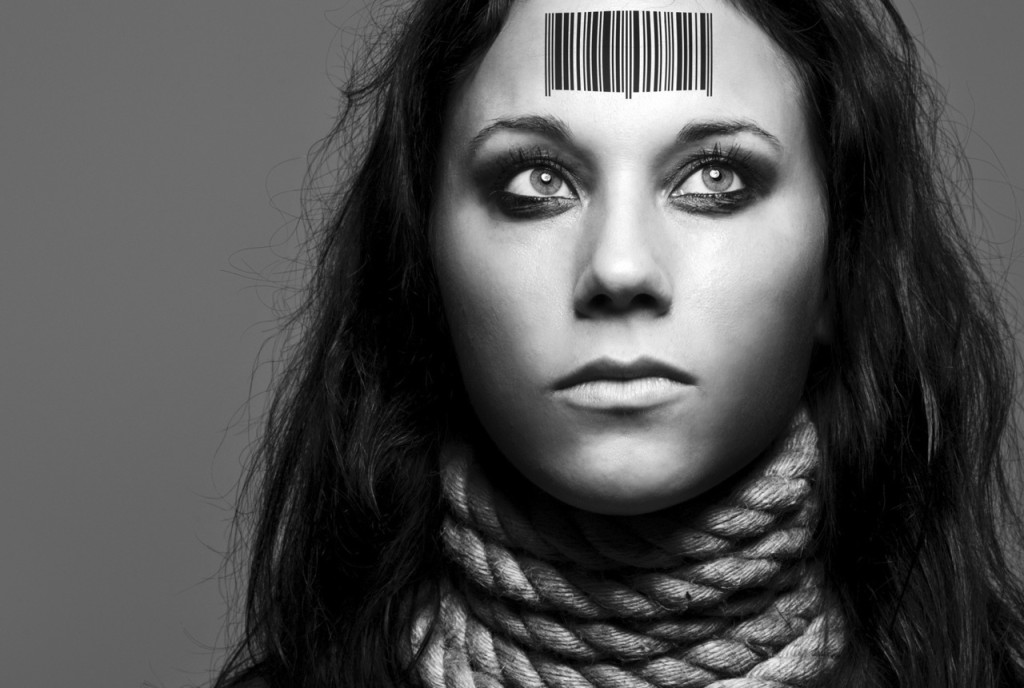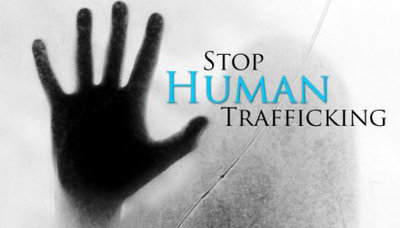A Look at Human Trafficking and San Diego's Crime Initiative for Their Southwest Border

For years the United States government has been “developing and implementing border security strategies to counter illegal cross-border activity.”1 Illegal activity across the U.S.–Mexican border remains a persistent and critical problem. One of the biggest difficulties being addressed is the problem of human trafficking, and its effects on its victims. Human trafficking is a lucrative business that not only ruins a person's self-worth, but also reduces them to the state of property. According to the United Nation's Protocol to Prevent, Suppress and Punish Trafficking in Persons, human trafficking is defined as the “recruitment, transportation, transfer, harboring or receipt of persons, by means of the threat or use of force or other forms of coercion, of abduction, of fraud, of deception, of the abuse of power or of a position of vulnerability or of the giving or receiving of payments or benefits to achieve the consent of a person having control over another person, for the purpose of exploitation.” 2 There is also a common misconception in the difference between smuggling and trafficking. Smuggling is a crime against the state, while trafficking is a crime against a person. Even if an individual chooses to leave with a person who is promising them a new job or a new life, they are still considered a victim of trafficking if said person has any intention of exploiting them.
It is important to recognize that all our knowledge about human trafficking only comes from what is reported. The number of people being trafficked each year could actually be higher. Due to limited information on human trafficking, the total number of all forced labor and sex trafficking is unknown in the United States. We must realize that there are gaps in our knowledge on this subject. Globally—as reported—the number of all forced labor is 20.9 million, the number of sex trafficking is 4.5 million, and labor trafficking is 14.2 million. 3
 Each year, worldwide there are about 800,000 to 6 million people trafficked across borders, and up to 17,500 people trafficked across borders in the United States. While there are many countries and cities who deal with the problem of human trafficking, we will be focusing on the San Diego–Tijuana corridor in particular. There is a group of highly committed individuals and organizations working to address human trafficking in this area. Strategic Applications International (SAI) is an organization that represents “a variety of state and local government organizations, faith-based ministries, and several non-profits in their efforts to acquire federal funding to support initiatives in law enforcement, housing, mentoring, drug courts, and work with those reentering our communities from incarceration.”4 Headed by founding partners James and Colleen Copple, SAI has created an initiative called “Below Ten: Mobilizing Border Cities to Address Guns, Drugs and Human Trafficking,” which addresses the issues of guns, drug trafficking, and human trafficking on the Southern Border. They sought a $300,000 grant for “over two years to develop community collaborations in three of the 10 border cities on or below Interstate 10, in the four Southwest Border States.”5 The grant will aid the initiative of integrating border communities by building partnerships so that their public safety will improve.
Each year, worldwide there are about 800,000 to 6 million people trafficked across borders, and up to 17,500 people trafficked across borders in the United States. While there are many countries and cities who deal with the problem of human trafficking, we will be focusing on the San Diego–Tijuana corridor in particular. There is a group of highly committed individuals and organizations working to address human trafficking in this area. Strategic Applications International (SAI) is an organization that represents “a variety of state and local government organizations, faith-based ministries, and several non-profits in their efforts to acquire federal funding to support initiatives in law enforcement, housing, mentoring, drug courts, and work with those reentering our communities from incarceration.”4 Headed by founding partners James and Colleen Copple, SAI has created an initiative called “Below Ten: Mobilizing Border Cities to Address Guns, Drugs and Human Trafficking,” which addresses the issues of guns, drug trafficking, and human trafficking on the Southern Border. They sought a $300,000 grant for “over two years to develop community collaborations in three of the 10 border cities on or below Interstate 10, in the four Southwest Border States.”5 The grant will aid the initiative of integrating border communities by building partnerships so that their public safety will improve.
In May 2013 an organization called Project Concern International (PCI) released a report on human trafficking, addressing the needs, assets, and recommendations. According to the report, the most effective initiatives taken by various individuals and organizations were: coordination, information sharing, services provided for at risk youth, and research initiatives. In a conversation, Colleen Copple of SAI, discussed some of the more unique and exciting aspects of the work being done in San Diego on human trafficking. Researchers have found that information sharing between schools, law enforcement, and the district attorney's office is extremely beneficial in the long run. In January 2013 the National Center for Mental Health Promotion and Youth Violence Prevention (National Center), created a toolkit called Navigating Information Sharing to help local school communities address the complexities of information sharing.6 Copple states that “this collaboration [between schools, law enforcement officials, local mental health authorities, and juvenile justice officials] is resulting in kids being identified and major investigations being generated from intelligence provided by the schools.”7 For many years, San Diego County has been working hard to establish relationships among various agencies in an effort to improve the overall safety and well-being of its citizens. In an effort to involve members of the community, a training program known as Global Oversight Analysis Linking Systems (GOALS) was implemented for learning about the Cross System Collaboration and Information Sharing Memorandum of Understanding . GOALS “offers a model for a strategic information sharing system that ultimately reduces systematic barriers to serve needs of families through relevant data collection and examination of trends across systems.”8 The program was headed by Dr. Bernard James, a law professor at Pepperdine University, and was held on October 10, 2013. The purpose of this training program was to invite people to sign on to the MOU, showing their support of information sharing among the youth.
 For over a year now, the San Diego County Regional Human Trafficking Advisory Council, with the aid of SAI, has been working toward organizing a summit “to help drive the process to assess current efforts, promising practices, gaps and to get recommendations” from others regarding the “Below Ten” project.9 The summit has been scheduled for January 24, 2014 at Point Loma Nazarene University Conference Center in San Diego where it is expected that more than 200 participants will attend, coming from law enforcement, education, prosecution, social services, child protective services, community groups, survivors, and researchers. Copple gives an example of one day at the event: It will focus on updating everyone on the current status of the response to human trafficking in San Diego County, such as successes/opportunities and barriers/gaps. Later, participants will break out into groups designated by geographic location to talk about how to integrate strategies across various agencies. SAI has chosen to use the social reconnaissance method—that includes small and large group processing of problems, barriers, and solutions using rapid response and prioritizing processes—to come up with recommendations to address the issue of human trafficking. After the summit, a survey is sent to all of the participants of the summit to condense all the responses. Participants are then asked to rank each recommendation for importance and feasibility through an online survey tool. The results of the survey prioritize the recommendations, which are then turned into a 100 Day Rapid Results Action Plan.
For over a year now, the San Diego County Regional Human Trafficking Advisory Council, with the aid of SAI, has been working toward organizing a summit “to help drive the process to assess current efforts, promising practices, gaps and to get recommendations” from others regarding the “Below Ten” project.9 The summit has been scheduled for January 24, 2014 at Point Loma Nazarene University Conference Center in San Diego where it is expected that more than 200 participants will attend, coming from law enforcement, education, prosecution, social services, child protective services, community groups, survivors, and researchers. Copple gives an example of one day at the event: It will focus on updating everyone on the current status of the response to human trafficking in San Diego County, such as successes/opportunities and barriers/gaps. Later, participants will break out into groups designated by geographic location to talk about how to integrate strategies across various agencies. SAI has chosen to use the social reconnaissance method—that includes small and large group processing of problems, barriers, and solutions using rapid response and prioritizing processes—to come up with recommendations to address the issue of human trafficking. After the summit, a survey is sent to all of the participants of the summit to condense all the responses. Participants are then asked to rank each recommendation for importance and feasibility through an online survey tool. The results of the survey prioritize the recommendations, which are then turned into a 100 Day Rapid Results Action Plan.
With the help of various organizations, events, and initiatives, Strategic Applications International has taken great strides to combat the issue of human trafficking in the San Diego area. They have come to the realization that in addition to raising awareness, enforcement strategies and community efforts are what will have the greatest impact in the long run. The “Below Ten” project “will introduce a new dynamic in the national concern about border security, immigration, drugs and human trafficking.”10
Poonam Sharma
Special Contributor
COPS Office
1 Karina Ordonez, 2008, “Securing the United States-Mexico Border: An On-Going Dilemma.” Homeland Security Affairs, Proceedings of the 2008 Center for Homeland Defense and Security Annual Conference (April) www.hsaj.org/?article=supplement.2.5.
2 “Human Trafficking,” United Nations Office on Drugs and Crime, www.unodc.org/unodc/en/human-trafficking/what-is-human-trafficking.html
3 Angela Bailey, 2013, “Human Trafficking: Needs, Assets & Recommendations,” Project Concern International, May.
4 “About Us,” Strategic Applications International, http://sai-dc.com/about/who-we-are/
5 Strategic Applications International, 2012, Border Initiative Narrative, Below Ten: Mobilizing Border Cities to Address Guns, Drugs and Human Trafficking, www.methpedia.org/sites/.../BelowTen-One-Pager-FINAL-highres.pdf..
6 Angela Bailey, 2013, “Human Trafficking: Needs, Assets & Recommendations,” Project Concern International, May.
7 Colleen Copple, e-mail message to author, October 29, 2013.
8 “Navigating Information Sharing,” PromotePrevent, http://informationsharing.promoteprevent.org/
9 Colleen Copple, e-mail message to author, October 29, 2013.
10 Strategic Applications International, 2012, Border Initiative Narrative, Below Ten: Mobilizing Border Cities to Address Guns, Drugs and Human Trafficking, www.methpedia.org/sites/.../BelowTen-One-Pager-FINAL-highres.pdf.
One on One With...Director Ron Davis | Spotlight on a Powerful Training Collaboration | 2013 National DEC Winners | San Diego and the Southwest Border | New Challenges for Law Enforcement

